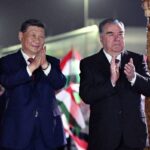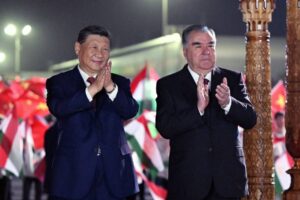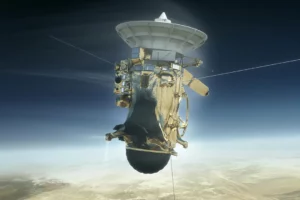Assumptions have been dramatically overturned. To really help Ukraine, a clearer picture of the war’s dynamic is vital.
Ukraine’s recent stunning success in liberating a huge swathe of its territory from Russian occupation directly contradicted months of consensus opinion by commentators and experts who predicted that the war had settled into an indefinite stalemate. Public perception of the conflict, as well as important policy decisions, are swayed by such assumptions. At this stage we must ask: why do experts keep overestimating Russian strength and underestimating Ukraine’s military capabilities, and how can they avoid doing so again?
One obvious point is that western states have gradually increased supplies of powerful and sophisticated weapons, and Ukraine’s forces have convincingly demonstrated they can use them to powerful effect on the battlefield. But this is only part of the story.
By focusing on military hardware, experts often miss the “software” of war: the quality of leadership, morale and motivation, decision-making and governance and the engagement of society.
War is an expression of political culture on the battlefield. And there are stark differences between Ukrainian and Russian culture. Many in the west mistakenly thought Ukraine was just like Russia, but weaker, more corrupt and chaotic. In fact, while Ukraine is by no means perfect, it is more agile and decentralised, compared to the autocratic and rigid Russian state.
On paper, Russia’s military power is massive, with three times the forces, and a 10-fold higher military budget. It looked like Ukraine had no chance of withstanding a full-scale invasion. But it did. President Zelenskiy was extremely effective in stabilising the situation by demonstrating personal bravery, staying in the capital and delivering regular briefings. This wasn’t just a media exercise; his work in boosting morale and organising society around supporting the war effort in novel ways has been crucial to Ukraine’s success.
This societal mobilisation and cohesion have paid off throughout the conflict. The high morale of the Ukrainian armed forces reflects the general societal resolve to resist Russian aggression. Ukraine’s military budget is in effect much larger than the official state funding. Ukrainian citizens and the private sector work to support the army every day, and every company, family and city is providing additional support to soldiers on the battlefield. News outlets fundraise and buy drones for units where their journalists are serving. Agricultural companies send night vision goggles, used all-terrain vehicles, mobile showers, chocolate and much more to employees who have signed up to fight. Private companies of all sizes invest millions in upgrading Soviet equipment with modern microchips and electronics, add armour to vehicles, assemble drones and retune communication devices. Millions of these invisible threads connect soldiers to families and companies back home. They feel they are supported; they know there is a home front.
Advertisement
Moreover, many in the west have underestimated the basic intellectual and combat capacity of Ukraine’s forces. They have substantially improved after eight years of holding back the Russian incursion into Donbas. The strategic deception of drawing more Russian forces to Kherson while concealing the gathering counter-offensive in Kharkiv in the north would be seen as a huge success for any army. The commander-in-chief, General Valeriy Zaluzhny, is 49 years old and has combat experience in Donbas. Younger officers with promise are quickly promoted, and unit commanders are empowered to act independently and provide feedback. He is turning the army into an agile and modern network of truly collaborative units.
The societal crowdsourcing approach employed by Ukrainians has also seriously impeded Russian capacity to advance, occupy and gather intelligence. A new crowdsourcing intelligence tool allows Ukrainians to report Russian collaborators and saboteurs instantly and anonymously. Over 300,000 Ukrainians have used it. Various other IT solutions developed by civilians allow territorial defence units to protect information about checkpoints and sniper locations. It is a beehive of innovation.
The picture for Russia is quite the opposite: a rigid, hierarchical system, full of fear. Many in the west underestimated how little motivation there would be among Russians to fight and die for Putin’s imperial ambitions with no just cause. Russia is struggling to replenish its forces, turning to mercenary firms who have gone as far as recruiting prisoners (the Russian private military sector acts on orders from the Kremlin). War relies on accurate information about the enemy, and Putin is not getting it, because his subordinates are afraid to tell the truth.
Despite Russia pumping billions of roubles into modernisation, its armed forces remain unreformed at the command level, with corruption eating resources. To conceal massive embezzlement, official figures are often inflated. Tanks, artillery and armoured vehicles are only as good as the people operating them. And people are the last thing autocrats care about.
Finally, many were fooled by Russia’s menacing projection of the image of a great military power that can dominate any region with layers of missile power. Misconceptions about Russian military power are rampant. Ukraine’s successes in hitting Russian warships in the Black Sea and bases in Crimea demonstrate that Russia is vulnerable in ways few would have predicted.
Incredibly, many of these factors were obvious after the first few disastrous weeks of the Russian invasion. But it can take time to overturn long-held beliefs. We must not continue to make the same mistakes. Distinguishing myths and misconceptions about Russian and Ukrainian capacity from the real drivers of battlefield dynamics will be key to making sound policy and providing effective support for Ukraine. Indeed, it will be crucial for the outcome of the war.
- Orysia Lutsevych is head of Chatham House’s Ukraine Forum
















